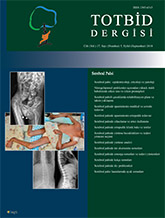
Cerebral palsy is a heterogeneous group of clinical syndromes that range in severity, and characterized by abnormal muscle tone, posture, and movement. These conditions are due to abnormalities of the developing brain resulting from a variety of causes. The overall prevalence of cerebral palsy is approximately 2 per 1000 live births. The prevalence of cerebral palsy is far higher in preterm compared with term infants, and increases with decreasing gestational age and birth weight. Most commonly identified prenatal risk factors for cerebral palsy are prematurity and/or low birth weight. Although the disorder itself is not progressive, the clinical expression may change over time as the brain matures. In this paper, the epidemiology, etiology, and pathology of cerebral palsy are reviewed.